1.
The first stage in problem identification in the design process is
analysis.
brief.
situation.
specification
2.
The statement, the device should be produced in a day is a design specification on
aesthetics.
construction.
economics.
ergonomics.
3.
Ideas generated from which a designer selects the best idea to solve a design problem is
detailed drawings.
final solutions.
orthographic projections.
possible solutions.
4.
Which of the following is true about a cylinder? It has
a diagonal.
a slant height.
a vertical height.
an apex.
5.
It is not advisable to touch electrical appliances with wet hands because water is a
good conductor of electricity.
good conductor of heat.
poor conductor of electricity.
poor conductor of heat.
6.
The electrical component that protects an appliance from high current is a
capacitor.
fuse.
LED.
register.
7.
The most common method for preserving fish for sale throughout Ghana is
smoking.
freezing.
drying.
salting.
8.
Grounded local material used to remove stains from the surface of kitchen equipment are termed
detergent.
abrasives.
bleaches.
cleaners.
9.
Using portion control in meal service helps to
improve table manners.
make meals appetizing.
prevent waste.
save time.
10.
Fine sifted wood ash is used for removing stains from
galvanized iron buckets.
aluminium saucepans.
wooden surface.
water jug.
11.
An object is said to be below eye level when it is seen from the
top.
bottom.
left.
right.
12.
Shading is intended to make a drawing
bigger.
flat.
neat.
real.
13.
When a colour is mixed with white, it becomes
neutral.
complementary.
shaded.
tinted.
14.
Identify a design principle that suggests movement from the following options.
Contrast
Balance
Rhythm
Unity
15.
What are the two major types of exhibition?
Open and Closed
Outdoor and Indoor
District and National
General and Specific
16.
The type of drawing which uses vanishing points is
isometric.
oblique.
orthographic.
perspective.
17.
Which of the following materials helps to reduce shrinkage in mortar?
Cement
Lime
Sand
Water
18.
Which part of firmer chisel fits into the handle?
Ferrule
Shoulder
Tang
Washer
19.
Use, Figure 1 to answer the question below
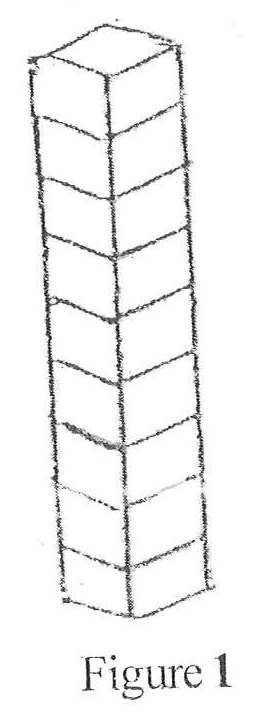
The tool is a
folding rule.
gauge rod.
spirit level.
straight edge.
20.
Use, Figure 1 to answer the question below

The tool is used for
checking straightness of walls.
levelling walls.
measuring the courses of walls.
plumbing walls.
21.
Use, Figure 2 to answer the question below
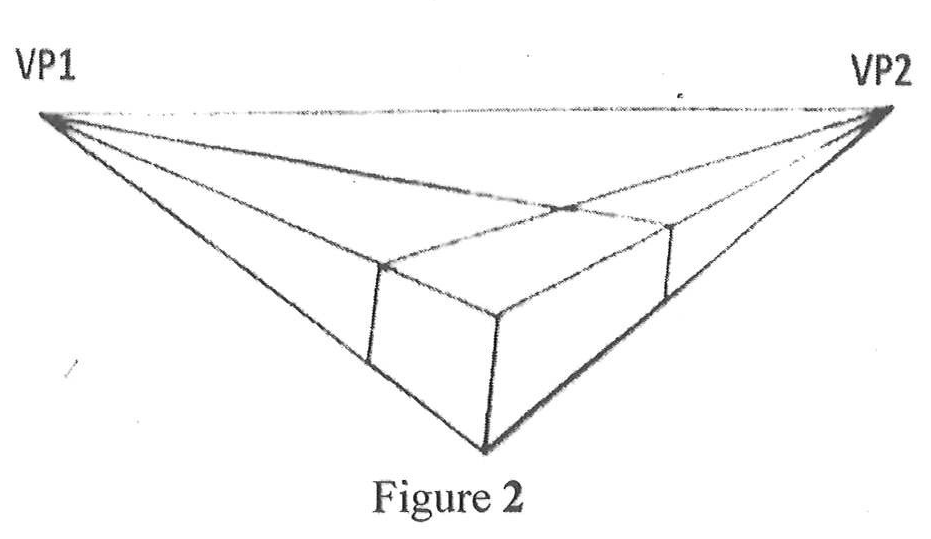
The object is sketched in
isometric.
oblique.
one-point perspective.
two-point perspective.
22.
Use, Figure 2 to answer the question below

The line joining VP1 and VP2 is called
continuous thick.
horizon.
horizontal.
long chain.
23.
The tool used to produce a circular hole in metal is a
chisel.
drill.
scriber.
tap.
24.
The brace is used for
boring holes in wood.
drilling holes in bricks.
drilling holes in metals.
filing curves in wood.
25.
Which of the following tools is used together with the club hammer to cut blocks?
Bolster
Float
Mallet
Trowel
26.
Which of the following metals is a ferrous material?
Aluminium
Cast iron
Copper
Soft solder
27.
The ratio 1:4 in mortar mix stands for
1 headpan of sand to 4 headpans of cement.
1 headpan of water to 4 headpans of sand.
1 headpan of cement to 4 headpans of water.
1 headpan of cement to 4 headpans of sand.
28.
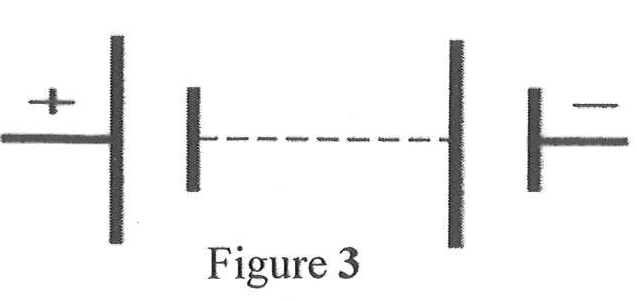
The electrical symbol shown in Figure 3 is a
battery.
bell.
cell.
switch.
29.
In perspective drawing, objects that are nearer the viewer appear to be
larger.
lighter.
narrower.
smaller.
30.
A safety precaution to be observed when using an electronic appliance is
overloading socket outlet.
plugging the appliance before cleaning.
switching off appliance after use.
using the appliance before reading instructions.
a)
State two ways fresh tomatoes are preserved.
b)
i)
List two vegetable fibres.
ii)
State two ways of finishing the edge of a plain seam.
c)
i)
State two causes of faults in home furniture.
ii)
List three design processes to be considered when making a kitchen stool for your sister.
d)
i)
State the cool colours on the six point colour wheel.
ii)
Give the symbolic meaning to the various lines stated below:
α)
Spiral;
β)
Diagonal;
δ)
Vertical;
γ)
Zig-Zag.
a)
i)
Make a freehand pictorial sketch of a claw hammer and label any two parts on the sketch.
ii)
State one use of the claw hammer.
b)
Copy and complete the table below:
| ACTIVITY | ONE REASON FOR CARRYING OUT THE ACTIVITY |
(i) Wearing overcoat |
|
(ii) Adding water to mortar mix |
|
(iii) Using a file with handle |
c)
Figure 1 shows the sketch of an operation being carried out in the workshop.
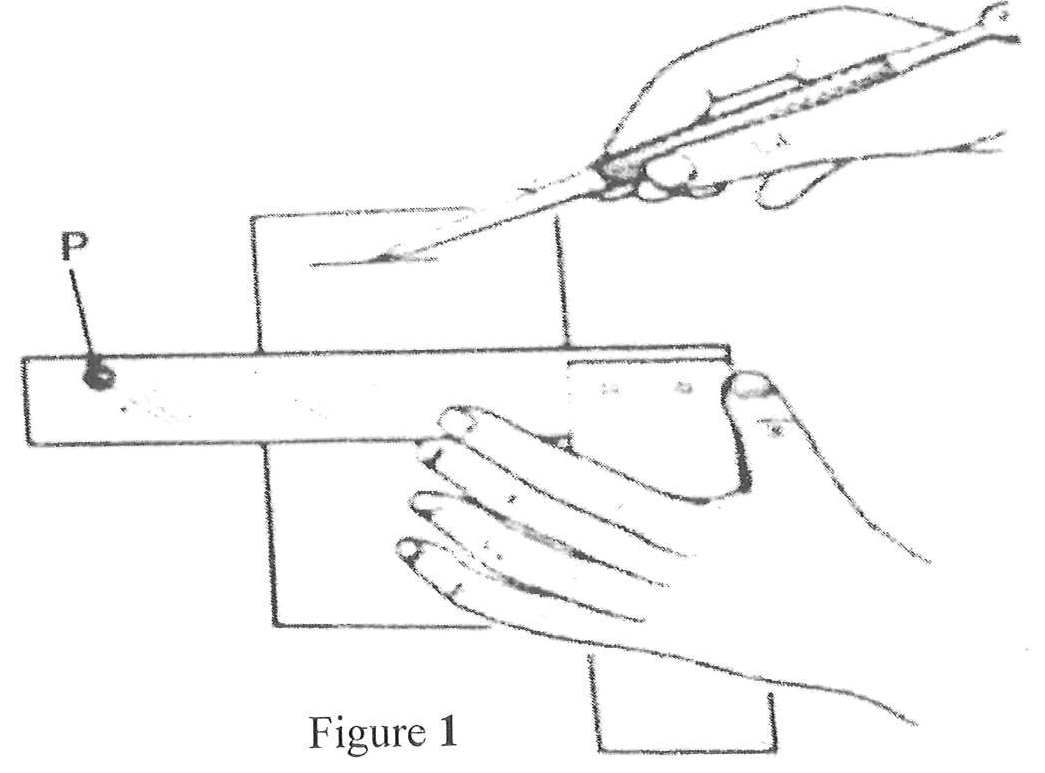
i)
State the operation being carried out.
ii)
Name the tool labelled P.
iii)
State one reason for cleaning the tools after use.
Figure 2 shows the isometric view of a wooden stand.
Use it to answer questions (a) and (b)
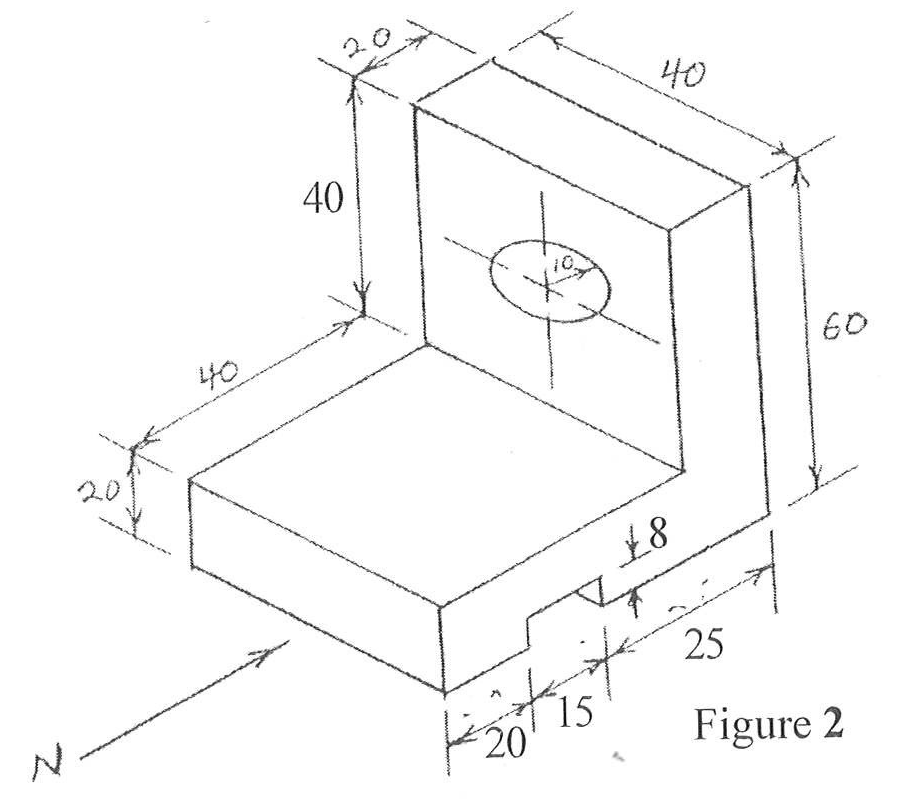
a)
i)
Draw a full size of the front view in First Angle Orthographic Projection in the direction of arrow N.
ii)
Draw full size, the plan.
b)
i)
List two types of timber that would be used to produce the stand.
ii)
List two tools to be used to perform each of the following operations:
α)
marking out the circular hole;
β)
cutting the circular hole.
Figure 3 shows sketch of a circuit diagram.
Use it to answer question (a).
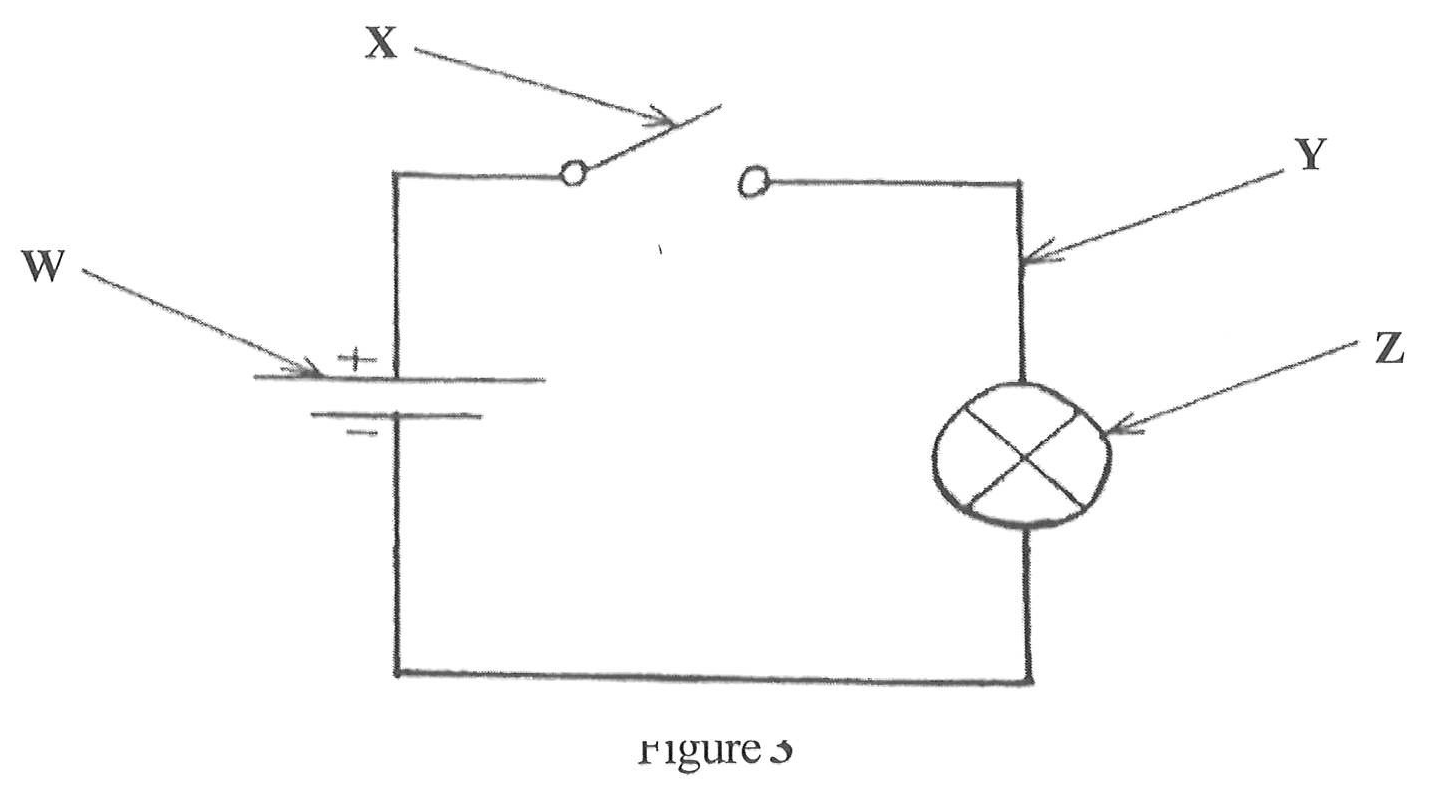
a)
i)
Write the names of the components labelled W, X, Y and Z.
ii)
State the uses of the components labelled W and X.
b)
Make a freehand pictorial sketch of the round wire nail and label any two parts on the sketch.
c)
State two reasons for using flux in a soldering process.
d)
State any two ways of keeping the workshop tidy.